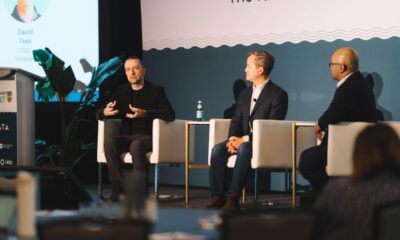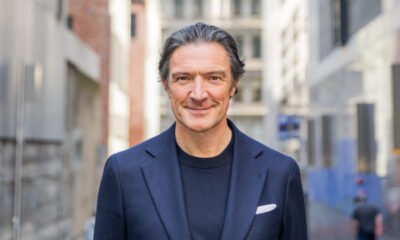Health
Industry incentives work against personalization

Understanding the complexity of healthcare transformation: exploring the challenges and solutions … [+]
“We need to stop treating healthcare like any other business. It doesn’t work the same way.”
—Sumita Yadav, MBBS, MHA, system vice president for operations and cardiovascular service line for Catholic Health
Sumita Yadav, who is both a physician and a healthcare system administrator, summarized the conundrum of trying to transform an industry like healthcare.
Healthcare is a sector like no other.
“Healthcare is about lives,” says Dr Yadav[KP1] . “In other companies you can say you’re going to get one [product] for this amount; if you don’t have it, leave. We can’t just turn people away because they might not have the money. Healthcare functions very differently. We empower people with their health and well-being so they can live their best lives and contribute to the community as best they can.”
This article is the ninth in a fourteen-part weekly series, in which I share insights from the Healthcare in the Age of Personalization Summit 2024. We heard from a wide range of healthcare experts: leaders from all facets of healthcare organizations, from the boardroom and the C-suite to the patient’s bedside. We covered topics such as why personalization is important, how we can shape our organizational cultures to facilitate it, what leadership skills are needed, how personalization is achieved when people know they matter, how to inject personalization into your employer brand, and why better. Care requires respect for individuality.
In this article, I share highlights from the panel discussion on the challenges of transforming America’s healthcare industry, considering how different it is from all others.
Panelists included:
- Sumita YadavMBBS, MHA, system vice president for operations and cardiovascular service line for Catholic Health
- Alen VoskanianMD, Chief Operating Officer for Cedars-Sinai
- John BaldwinChief Operating Officer of TriStar Southern Hills Medical Center, HCA Healthcare
Incentives work against personalization
All three panelists acknowledged the challenges of trying to change a system where there is so much disconnect between what we incentivize and reward and the outcomes we strive for.
Dr. Yadav, who is both a doctor and an administrator, painted a picture of the differences between what we want as patients and what organizations are encouraged to do.
“[When I’m a patient,] “I want someone who is going to take care of me, hold my hand because I’m scared, I need the health care I need, and I just want it to be sensible and holistic,” she said.
But the system is “complexity on top of complexity,” she said. “We don’t know what something costs. There is no idea of what one hospital charges versus what another charges, what one insurance pays versus another.”
Most of us have experienced that complexity as patients. This is what it looks like from the perspective of someone whose job is to ensure that a healthcare system can serve patients while remaining financially viable.
“If the price of something is $1, [the government payor] pay 70 or 80 cents and they let you figure out how to do the rest,” she said. “How are you going to close that gap? That’s when commercial insurance steps in and you try to get the most out of them, but their only criteria is that they are financially profitable. So they are encouraged to continue to deny everything. Even if they ultimately have to approve it, they deny it for 60 days, hold that money and earn interest on it.”
That’s the business model.
Dr. Yadav said the burden falls on the shoulders of healthcare providers: “They provide the care, they don’t get back the payments they need to invest. Even for the payments they could eventually get, they have to fight.”
Dr. Voskanian shared the same frustrations.
“All the administrative hassle to get approval for things that are denied, to actually get paid, that costs money,” he said. “No surprise, we are the highest [in terms of healthcare costs] in developed countries. Earlier this year I went to Japan and South Korea to study their healthcare systems. They do not have as many administrative costs and administrative burdens. It is very clear and transparent what you get paid for, and how you get paid for it.”
Imagine if we had a system that trusted doctors to make the right decisions for their patients.
Dr. Yadav explained how it could and should be: “Our doctors know the care that is needed and they do not just operate on people without reason. If they are active, something has to be done. So why do we have to worry so much about getting that payment? Why doesn’t that just happen automatically, so that the organization can actually invest again in patient care?”
New models also have challenges
Dr. Yadav mentioned the new models, such as value-based care or bundled payment, and said they can be good but also come with challenges.
“Some of these new models are really well thought out,” she said. “What they do, however, is actually take away the freedom of choice from patients or consumers. We say that if you get care within your own system, it will cost less, and there is truth in that. But then you start to incentivize physicians to only refer patients within the network. Instead of the financial incentives or punishments being the things that drive behavior, if we say we train our people well, give them the tools to make informed decisions and then hold them accountable for those results, then the entire landscape would start to falter. shift.”
Community Partnerships
Baldwin said the healthcare system cannot reinvent itself alone, and spoke about the benefits of unconventional partnerships.
“As we move forward, we need to know what is important to our people,” he said. “We need to connect with them on a human and personal level. When I think about public health, I think we need to look at unconventional partnerships. We have to start thinking differently. I truly believe that the healthcare system today cannot reinvent itself alone. It will take outside thinking from non-traditional healthcare providers and entities to enter the space and innovate.”
He shared an example of an organization in his local community focused on addressing hypertension within Nashville’s healthcare ecosystem.
“[They had] found that one specific ethnic group had a hypertension rate of 50%, while another ethnic group had a hypertension rate of 28%,” Baldwin said. “They executed a multidisciplinary collaboration between private and public collaboration through government, local non-profit organizations and a local FQAC [federally qualified health center]. They implemented targeted interventions at the zip code level to help improve health outcomes for these very specific individuals, creating tailored, personalized approaches to their care needs. That, to me, is starting to create some unconventional partnerships and people that may not be at the table today as we see that model in our healthcare ecosystem.”
Learn from other industries, but remember that healthcare is different
Dr. Yadav agreed that healthcare needs to learn from other sectors. She said she is all for disruptors who challenge the status quo, especially when it comes to bringing in new skills and digital innovations. But she also made a comment.
She gave an example of a digital transformation that actually worsens the patient experience: kiosks in the office reception area. They save costs because fewer staff are needed to check people in. But it puts a new burden on patients’ shoulders.
“The burden shifts to the patient to self-register rather than having someone care for him or her,” she said. “The kiosk robs us of the opportunity for human connection. It’s those connections that could have led to people understanding each other, and those patients coming back and saying, what a fantastic experience; those healthcare providers really treat you like a human being.”
How can healthcare providers adopt some of these innovations while still respecting the human touch in patient care?
“Every room we are in needs a patient voice,” Dr. Voskanian said. “We need patients for our innovations. We need patients in our boardrooms. We need that voice.”
The role of data
Baldwin said that when it comes to data, we need to consider what we are trying to achieve with data, to have the right data points in place to meet the needs of the right person at the right time and provide a personalized approach.
“Our mobile device is how many of us live, operate and do what we do every day,” says Baldwin. “You can travel around the country and plan an experience without talking to anyone, and then get customized and tailor-made choices.”
There is potential for personalization throughout a patient’s healthcare experience. Baldwin said we need to be able to know a patient’s needs and preferences before he or she comes for care.
“That’s where the tech companies can help us think differently about the healthcare experience,” Baldwin said. “[We could be] by merging different data points so that our providers and our healthcare providers can help provide better, more compassionate care that is empathetic to the patient’s needs and what they need in that moment.”
Dr. Voskanian agreed and added to that view.
“Having data available about a physician at the time of care can help inform clinical decision making,” he said. “[That could include] bringing forward data from the patient file that is meaningful to alert them to something like this This patient is taking a blood thinnerinstead of the doctor having to look through the chart.”
Data can also reveal health equity considerations.
Dr. For example, Voskanian said, “If you prescribe medications this medicine for this patient, based on patient demographics, [there might be a recommendation for] screening for colorectal cancer.”
Dr. Voskanian shared an example of how he uses data to personalize. Even though he is an administrator, he still sees patients.
“I often ask patients about their lives, and sometimes they tell a story about their excitement about their granddaughter graduating from college,” he said. “And I am genuinely interested in it. I have a place in the graph where I write, This patient’s granddaughter is graduating from Berkeleyor this patient just adopted a rescue puppy. And the next time they come in, I’ll bring that up. Hey, how’s your puppy? Data can also help us with personalization.”
Watch this short video to learn more from the panel.
Next time: What nursing can teach physicians and CEOs about leadership.













